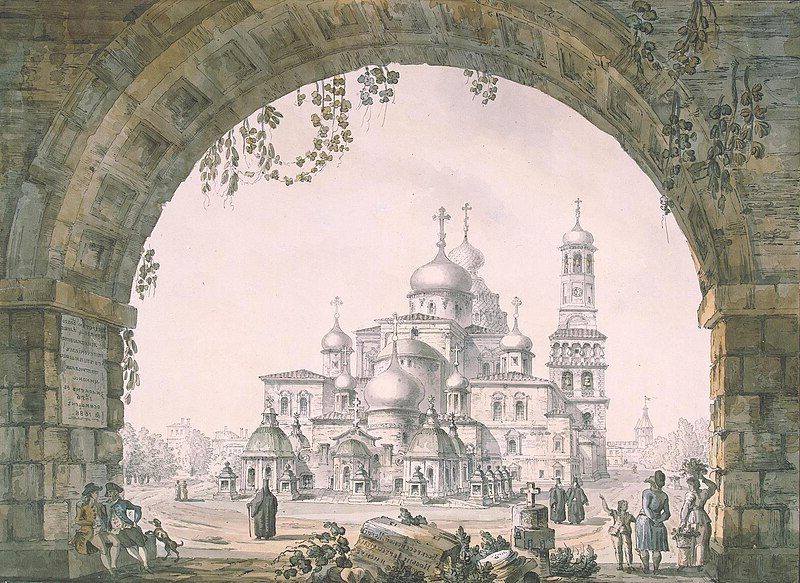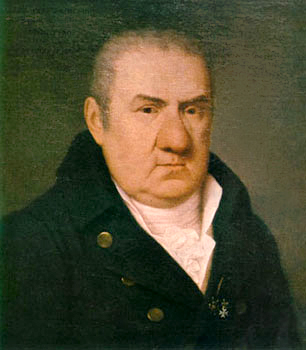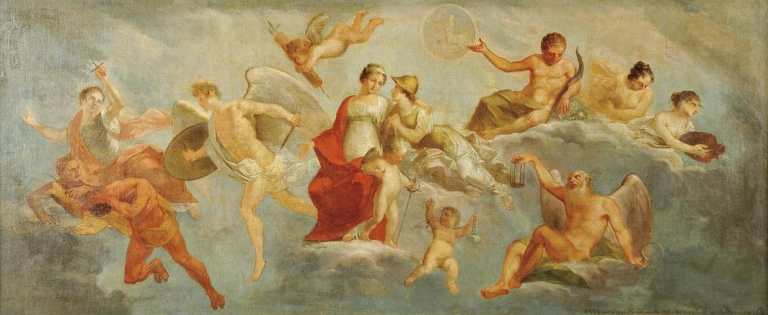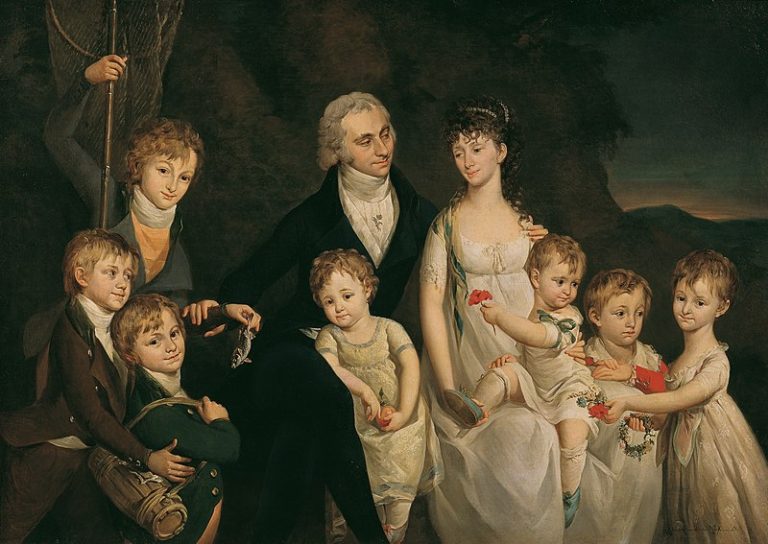Giacomo Quarenghi Painter: 18th Century Italian Architect and Artist
Born: 21 September 1744, Rota d’Imagna, Italy
Death: 18 February 1817, Saint Petersburg, Russia
Art Movement: Neoclassicism
Nationality: Italian
Influenced By: Andrea Palladio
Teachers: G. Reggi, Anton Raphael Mengs, and Stefano Pozzi
Giacomo Quarenghi Painter: 18th Century Italian Architect and Artist
Early Life and Education
Giacomo Quarenghi’s early years shaped his path as an architect and painter. His noble Italian roots and formative experiences in Bergamo laid the groundwork for his artistic career.
Origins in Bergamo
Giacomo Quarenghi was born in 1744 Rota d’Imagna, Italy. He came from an Italian noble family. His parents wanted him to become a lawyer or join the church. But young Quarenghi had other plans. He showed a talent for art at an early age.
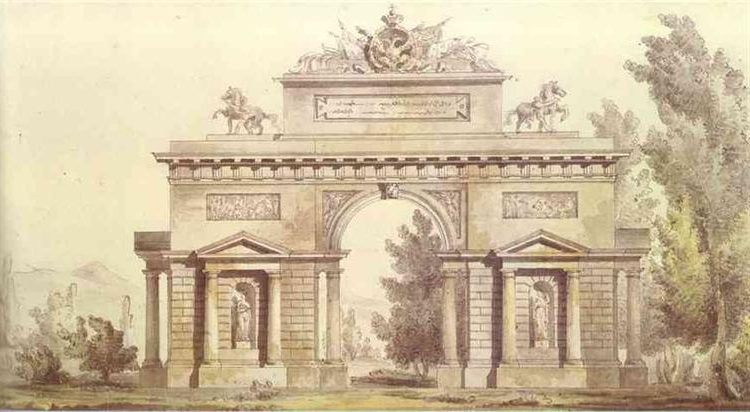
Giacomo Quarenghi’s Design of a Triumphal Arch (1814)
Quarenghi started his art training in Bergamo. He studied under G. Reggi, a student of the famous painter Tiepolo. This early education gave Quarenghi a solid foundation in painting techniques.
Artistic Development Under Mengs and Pozzi
Quarenghi moved to Rome to further his art studies. There, he trained under two important painters:
- Anton Raphael Mengs
- Stefano Pozzi
These teachers helped Quarenghi improve his painting skills. He learned about color, composition, and the classical style. This training was key to his growth as an artist.
Influence of Palladio and Venetian Architecture
Quarenghi traveled across Italy to learn more about art and architecture. He visited Venice, Vicenza, Verona, and Mantua. These trips exposed him to the work of Andrea Palladio.
Palladio’s buildings in Venice and Vicenza made a big impact on Quarenghi. He studied Palladio’s use of classical forms and proportions.
Venetian architecture also caught Quarenghi’s eye. The grand palaces and churches of Venice inspired his later work. These influences would shape his unique architectural style.
Architectural Achievements
Giacomo Quarenghi made a lasting impact on Russian architecture through his neoclassical designs. He created many important buildings in St. Petersburg and other cities during the reigns of Catherine II and Alexander I.
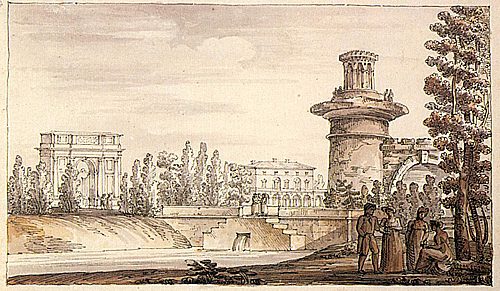
Ruined tower and Orlovsky gate by Giacomo Quarenghi
Neoclassicism and Imperial Commissions
Quarenghi brought the neoclassical style to Russia in the late 18th century. Catherine II hired him as court architect in 1779. He designed palaces, theaters, and public buildings in a simple, elegant style inspired by ancient Greek and Roman architecture.
Quarenghi used clean lines, columns, and symmetry in his work. His buildings had a light, airy feel with large windows and open spaces. This style fit well with Catherine’s desire to make Russia more European.
The architect worked on many imperial projects. He designed parts of the Winter Palace and created the English Palace at Peterhof. Quarenghi also built the Alexander Palace as a wedding gift for the future Tsar Alexander I.
Major Works in St. Petersburg and Environs
St. Petersburg is home to many of Quarenghi’s best-known buildings. He designed the Hermitage Theatre, which is still used for performances today. The theater has a classic oval shape with tiers of seating.
Another famous work is the Smolny Institute for Noble Maidens. This large complex was built to educate girls from noble families. It has a striking white facade with columns and a central dome.
Outside the city, Quarenghi created the Alexander Palace in Tsarskoye Selo. This elegant building later became a favorite home of Nicholas II, the last Russian tsar. Its simple but grand style shows Quarenghi’s skill at blending beauty with function.
Contributions to Education and the Arts
Quarenghi’s work went beyond just designing buildings. He helped shape Russian culture and education through his architecture. The Smolny Institute played a key role in women’s education in Russia.
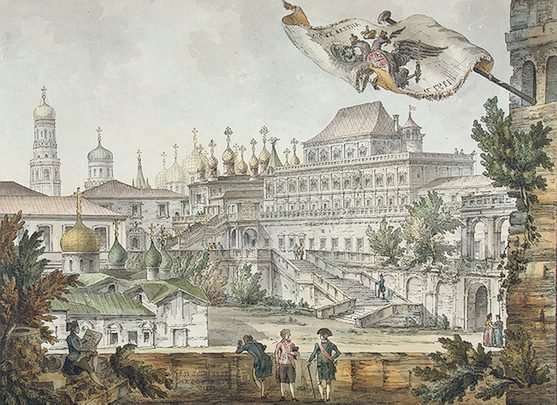
Terem Palace by Giacomo Quarenghi
The architect also designed the Catherine Institute in St. Petersburg. This school trained teachers and helped spread education across the Russian Empire.
Quarenghi’s theaters and cultural buildings supported the arts. The Hermitage Theatre gave a home to opera and ballet in the capital. His designs for libraries and museums helped preserve Russian history and culture.
Through these projects, Quarenghi left a lasting mark on Russian society. His buildings continue to serve important roles in education and the arts today.
Artistic Legacy and Impact
Giacomo Quarenghi left a lasting mark on art and architecture. His work shaped Russian design and influenced many who came after him.
Patronage and Influence
Catherine the Great was Quarenghi’s main patron. She hired him to design many buildings in St. Petersburg. His style became popular with Russian nobles. They asked him to create palaces and country houses.
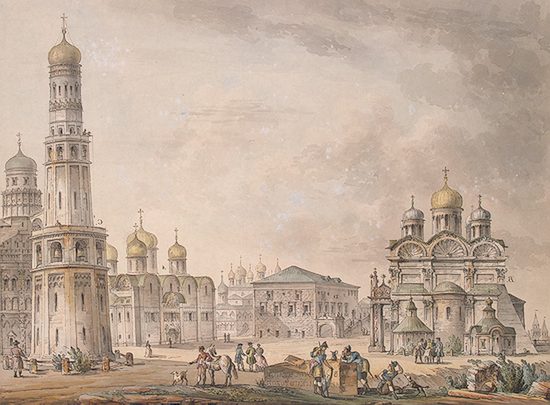
Cathedral Square of the Moscow Kremlin, 1797
Quarenghi brought Italian neoclassical ideas to Russia. His designs were clean and simple. They used columns, domes, and arches in new ways. Other architects copied his style.
His work spread beyond Russia. Architects in other countries saw his drawings. They used his ideas in their own buildings.
Preservation of Quarenghi’s Drawings and Watercolours
Quarenghi was a skilled painter as well as an architect. He made many drawings and watercolors of his building plans. These artworks still exist today.
Museums in Russia and Italy keep his drawings safe. The Hermitage in St. Petersburg has a large collection. The Biblioteca Civica in Bergamo, Italy also has many of his works.
These drawings show Quarenghi’s design process. They help us understand how he worked. Art experts study them to learn about 18th century architecture.
Recognition and Remembrance
Quarenghi gained fame during his lifetime. The Russian Academy of Sciences made him a member. This was a rare honor for a foreign artist.

Giacomo Quarenghi’s View of Saint Michael’s Palace (1801)
After his death, his reputation grew. Art historians wrote books about him. Museums held shows of his work. In 1967, the USSR made a stamp with his picture.
Today, Quarenghi is known as a key figure in Russian architecture. His buildings are protected landmarks. Tours in St. Petersburg often stop at his creations. His legacy lives on through his art and the buildings that still stand.
Frequently Asked Questions
Giacomo Quarenghi was known for his architectural works, but he also had a background in painting. His artistic training and style influenced both his architectural designs and paintings.
What notable works did Giacomo Quarenghi produce as a painter?
Quarenghi’s painting career is less well-known than his architectural work. He started as a painter in Bergamo and Rome before focusing on architecture.
His early paintings were likely influenced by his teachers Anton Raphael Mengs and Stefano Pozzi in Rome.
How did Giacomo Quarenghi’s architectural work influence his paintings?
Quarenghi’s architectural background shaped his painting style. He often included architectural elements in his artworks.
His paintings showed a strong sense of structure and proportion, reflecting his architectural training.
What artistic styles and influences are evident in Quarenghi’s paintings?
Quarenghi’s paintings display Neoclassical influences. This style emphasized clean lines and classical themes.
His work was inspired by Andrea Palladio, a famous Renaissance architect. This inspiration likely carried over into his paintings.
Can you describe the themes commonly explored in Quarenghi’s paintings?
Quarenghi’s paintings often featured architectural subjects. He painted buildings and interiors.
His works may have included landscapes with classical structures, reflecting his interest in ancient Roman and Greek architecture.
How has Quarenghi’s painting style evolved throughout his career?
Quarenghi’s early style was shaped by his training in Italy. His paintings likely showed Italian Baroque influences at first.
As he focused more on architecture, his painting style probably became more precise and structural.
What are some significant contributions of Giacomo Quarenghi to the art world?
Quarenghi’s main contributions were in architecture, especially in Russia. He was named “Grand Architect of all the Russias.”
His paintings, while less known, helped bridge the gap between Baroque and Neoclassical styles in Italian art.

